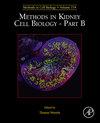小鼠模型肠系膜淋巴管插管。
4区 生物学
Q4 Biochemistry, Genetics and Molecular Biology
引用次数: 0
摘要
肠系膜是动物消化系统的重要组成部分,因为它将肠道固定在适当的位置,同时也包含特殊的淋巴结和免疫细胞,帮助保护肠道免受感染,并支持身体在腹腔中的免疫反应。分析肠系膜淋巴可以帮助更好地了解运输机制和对各种疾病的潜在影响,如淋巴疾病或潜在感染。第一步是精确收集肠系膜淋巴。在本章中,我们描述了优化的方案插管收集传入和传出肠系膜淋巴液。本文章由计算机程序翻译,如有差异,请以英文原文为准。
Cannulation of mesenteric lymphatic vessels in a murine model.
Mesentery is a crucial part of an animal's digestive system since it holds the intestine in place, while also contains the specialized lymph nodes and immune cells that help protect the intestines from infections and support the body's immune response in the abdominal cavity. Analyzing mesenteric lymph can help better understand the transport mechanisms and potential implications for various conditions, such as lymphatic disorders or underlying infections. The first step towards this is the precise collection of the mesenteric lymph. In this chapter, we describe the optimized protocol of cannulation to collect afferent and efferent mesenteric lymphatic fluid.
求助全文
通过发布文献求助,成功后即可免费获取论文全文。
去求助
来源期刊

Methods in cell biology
生物-细胞生物学
CiteScore
3.10
自引率
0.00%
发文量
125
审稿时长
3 months
期刊介绍:
For over fifty years, Methods in Cell Biology has helped researchers answer the question "What method should I use to study this cell biology problem?" Edited by leaders in the field, each thematic volume provides proven, state-of-art techniques, along with relevant historical background and theory, to aid researchers in efficient design and effective implementation of experimental methodologies. Over its many years of publication, Methods in Cell Biology has built up a deep library of biological methods to study model developmental organisms, organelles and cell systems, as well as comprehensive coverage of microscopy and other analytical approaches.
 求助内容:
求助内容: 应助结果提醒方式:
应助结果提醒方式:


